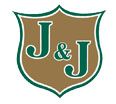Both subterranean and drywood termite species are highly abundant throughout Louisiana. The Formosan subterranean termite is the most destructive termite species in the state where it caused around half a billion dollars in property damage annually. The eastern subterranean termite is another highly damaging termite species in the state, and while drywood termites may not infest homes at the rate subterranean termites do, some drywood termites can initiate structural infestations during the winter season in Louisiana.
Unlike subterranean termites that dwell in the ground soil where workers establish infestations in homes from the ground up, drywood termites establish infestations as winged termites (alates) during the annual mating swarms. Therefore, it is tremendously important for Louisiana homeowners to know when the state’s drywood termite species swarm. Subterranean termites almost never establish structural infestations as swarmers; instead, swarming subterranean alates establish colonies in the soil. However, during the winter season, Louisiana residents can spot both subterranean and drywood termite swarms, so recognizing how alates from both termite groups differ in appearance is important.
In Louisiana, eastern subterranean termite alates swarm from January to March, and sometimes during the late fall. Alates of this species are around 10 mm in length, with a dark brown to black-color body. During the winter, eastern subterranean termite swarms often occur at the same time as dark southern drywood termites swarm. Dark southern subterranean termite alates are slightly smaller than eastern subterranean termite alates, and they are reddish-brown to black in body color.
Naturally, infestations of dark southern subterranean termites are usually initiated during the late fall and early winter seasons, so keeping an eye out for dead alates, which often collect on windowsills, door frames and around outdoor wood sources, is important given this species infestation potential. Swarms located near a home do not indicate an active drywood termite infestation indoors, but if a large amount of alates are found around a home, there is a chance that one single male and female may have established an infestation. Indoor swarms, whether of subterranean or drywood termites, indicate that termites have infested some part of a home, making an inspection necessary.
Have you ever spotted a termite swarm during the winter months?
Tags: Termite Control, Termite Inspection, Termites



